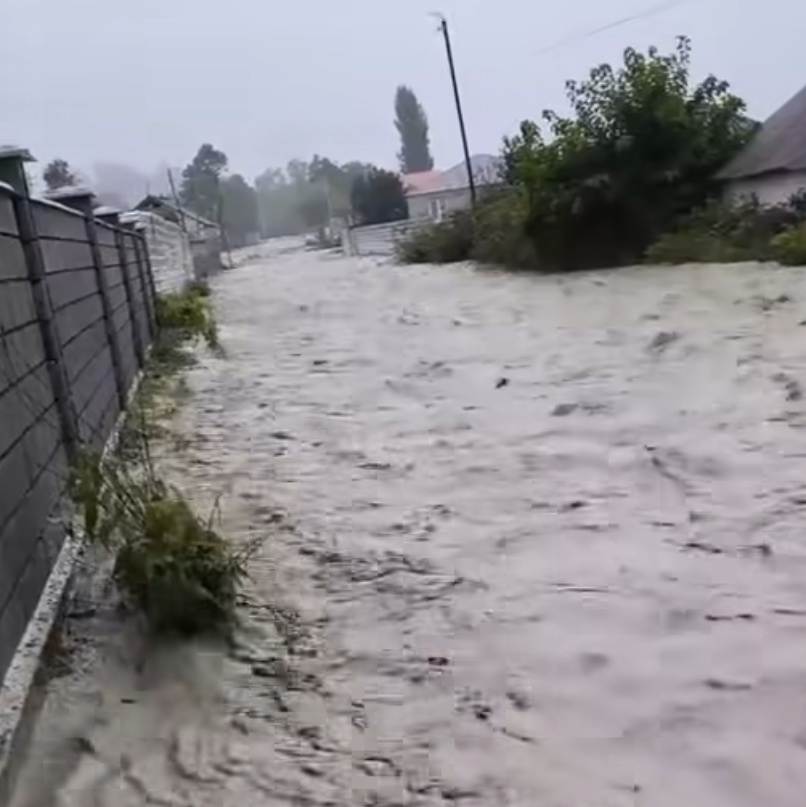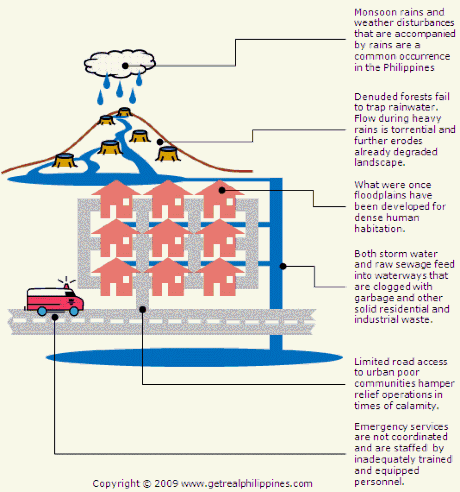With yet another one — Uwan (Fung-wong) — coming over the next 48 hours, the Philippines had already been hit by three devastating typhoons just in the last several weeks. The most recent one, Kalmaegi had unleashed Category 5 level destruction over the Visayas reason with Cebu bearing the brunt of its violent visit.

Torrential floods of unprecedented ferocity had hit Cebu causing what will likely be a humanitarian crisis that will persist for weeks. From this and the shape of the impact of this year’s typhoons, this has become the new normal.
| SUPPORT INDEPENDENT SOCIAL COMMENTARY! Subscribe to our Substack community GRP Insider to receive by email our in-depth free weekly newsletter. Subscribe to our Substack newsletter, GRP Insider! Learn more |
Unfortunately for the Philippines, tropical cyclones have, themselves, long been a normal. What has changed over the last several decades, however, is the size of the Philippines’ human population and its physical landscape. With the ten-fold ballooning of the population of the Philippines since “independence” in 1946 and, as a result of this, the degradation of its environment to extract resources to support this growth, the manner with which water dumped onto the islands by otherwise natural weather events like monsoon rains and typhoons has changed dramatically.

The calamities we see today are effectively double-whammy outcomes of a population growth clip that all but outpaced the ability of Philippine society to manage risk. Forests and other biological features that once absorbed wind and water unleashed by weather disturbances are now largely gone, and population pressure on limited resources have pushed Filipinos to inhabit high risk areas making entire communities literally disasters waiting to happen.
The sorts of solutions that will eventually mitigate the effects of tropical typhoons in the Philippines will take lots of money and many years to build out. Money and time that could have been capitalised over the last half century had Philippine society applied proper foresight when they had the chance. A reasonable population policy plus sound land and resource management applied would have served as robust foundation for shrewd investment in infrastructure development could have been sustained.
Sadly, all is always crystal clear in hindsight. Perhaps the only recourse now is to apply the foresight that future hindsight from the next generations of Filipinos will likely call for.
- This latest Filipino-style ‘anti-corruption’ circus proves that the Philippines needs a serious reboot - November 16, 2025
- Filipinos literal sitting ducks as wind and floods from natural tropical typhoons amplified by years of neglect bear down - November 9, 2025
- Rally NA NAMAN??? - September 20, 2025
meanwhile, the sitting dicks are doing nothing.
hey bobby M, heres what you should do:
for starters , get rid of the useless crispy jesus “boying” and the amboy tibo geodoro.
get your house in order, stop with all the nonsense politics and the idiotic policies of your administration.you stupidly act like the philipines is relevant in global politics, but it is not, you are head of a meaningless minnow government whose people will serve only as a meatshiled for american interests.
your family name is beyond redemption anyway. it is worse than trash.
you have done nothing in 4 years but squander all the gains of the duterte administration.
the only marcos who still has a chance of winning now is francis marcos.
not you, not your lesbian son.
yea , bobby M
time to remove the crispy jesus “boying”
then that amboy tibo geodoro.
include that idiot annoying spokes-girl too.
then pin everythin on your primo, the forest tambaloslos.
remove all edca sites fothwith, adopt a truly neutral foreign policy.
time to save your own ass bobby m, there might still be time
Resourcefulness stems from creativity, and critical thinking is also a form of creativity that should enable us to solve problems outside of financialism.
“boying” crispy jesus looks like a crispy seaweed now, he should quit government, he is already very rich.
he moves slow and gets nothing done, he should step aside for the younger ones.
just retire, enjoy his ill money and his remaining days on this earth.
crispy jesus is going to die.
it is inevitable.
enrile dies, no one gives a shit.
it will be the same for imelda.
and to crispy jesus”boying” ( a UP grad, bringing endless shame to all UP grads everywhere )
no one will remember your names
You deserve this for worshiping frauds like Jesus Christ and America
It’s fascinating that the Ivatans are regularly blasted with Category 5 typhoons, and yet not suffer casualties. Their homes are built to withstand such forces of nature, and the houses are not luxuries for the privileged only but are built through “bayanihan” spirit with local materials.
One of the recent and disturbing activities that’s prevalent throughout developing provinces is rapid urbanization, which entails sprouting of condominiums and housing in what used to be agricultural or forest lands. Of course, there’s no plan to reforest the elsewhere and rarely are there plans to handle or resolve the side effects of proper drainage, noise pollution, traffic, etc. Housing is made cheaply to maximize profit, while the concept of “bayanihan” is a nostalgic memory from a previous era. Nowhere in Cebu, Southern Luzon or other areas undergoing rapid urbanization will one see homes of Ivatan strength and quality.
The observed flooding and its devastating effects is a side effect of a system that’s built on greed, lies, corruption, “turning a blind eye”, etc. Rapid urbanization takes a toll on natural resources, disrupts and redirects water flow, and often lacks an infrastructure to handle rapid changes in population and side effects of mass housing. There’s no surprise that a bit of rain warrants school or government offices closure: possible flooding and an excuse to have a day off.